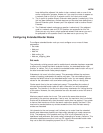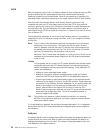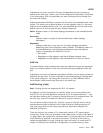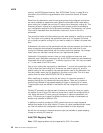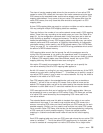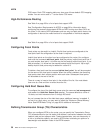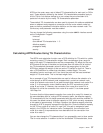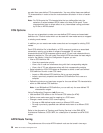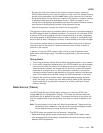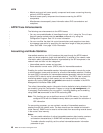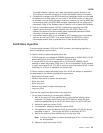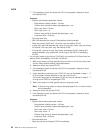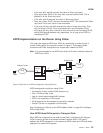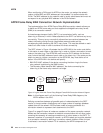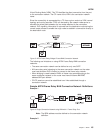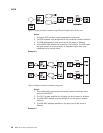v By manually setting the values of the
maximum shared memory
,
percent of
APPN shared memory to be used for buffers
, and the
maximum cached directory
entries
tuning parameters using the talk 6 option of the command line interface.
v By selecting values for the
maximum number of ISR sessions
,
maximum number
of adjacent nodes
and other parameters shown in Table 8 on page 97, and
having the tuning algorithm automatically calculate the
maximum shared memory
and
maximum cached directory entries
tuning parameter values.
Use the Configuration Program to invoke the tuning algorithm.
The
maximum shared memory
parameter affects the amount of storage available to
the APPN network node for network operations. For example, you can allow APPN
to have a 4K RU size by setting
maximum shared memory
to at least 1 Megabyte
and setting
percent of APPN shared memory used for buffers
to a sufficiently large
value to allow at least 1 Megabyte of memory to be available to the buffer manager.
The
maximum cached directory entries
parameter affects the amount of directory
information that will be stored or cached to reduce the time it takes to locate a
resource in the network.
In general, tuning the APPN network node involves a trade-off between node
performance and storage usage. The better the performance, the more storage
required.
Tuning Notes
1. The tuning parameter settings should reflect anticipated growth in your network.
2. If you define connection networks within your APPN network and you anticipate
that most end nodes will initiate LU-LU sessions with other end nodes on the
same connection network, you should set the
maximum number ISR sessions
parameter to a smaller value (1). Using connection networks in this manner
reduces the shared memory requirements for the router network node because
most LU-LU sessions will not flow through the APPN component in the router.
3. Because the
maximum shared memory
parameter affects storage allocation
within the router, you should use care when explicitly defining this parameter.
Use the defaults as a guide when increasing or reducing maximum shared
memory manually.
Node Service (Traces)
The APPN Node Service (Traces) option allows you to start any APPN trace
through talk 6 or the Configuration Program. The traces are activated when the
configuration file is applied to the router. The traces will continue to be active until
they are stopped when a new configuration that stops the traces is applied to the
router.
Note: Running traces on the router can affect its performance. Traces should be
started only when needed for node service and should be stopped as soon
as the required amount of trace information is gathered.
The APPN traces are grouped into the following 5 categories:
v Node-level traces specify traces concerning the overall APPN network node.
v Inter-process signals traces specify component-level traces concerning signals
between APPN components.
APPN
Chapter 1. APPN 39



